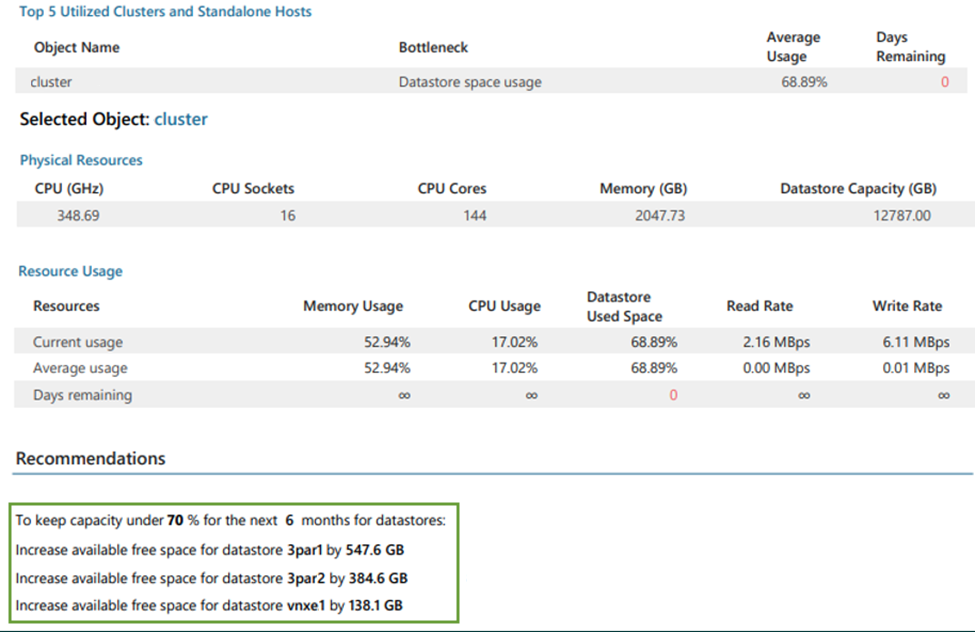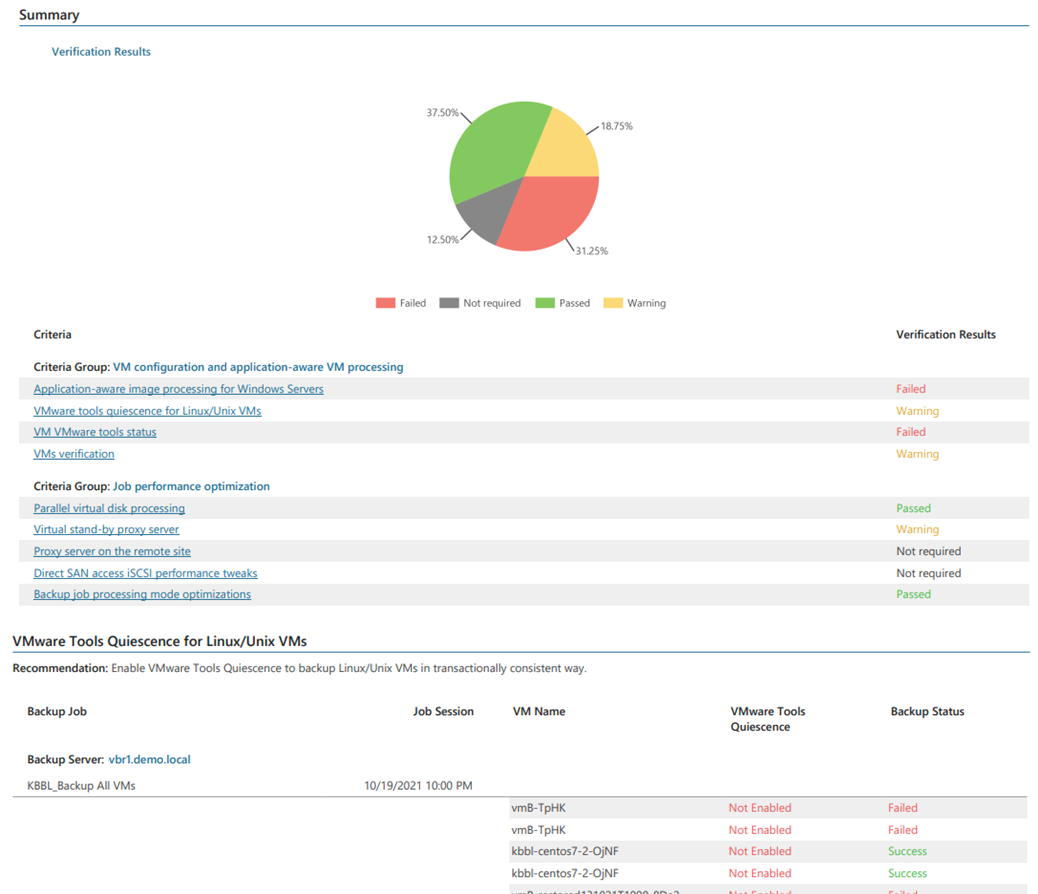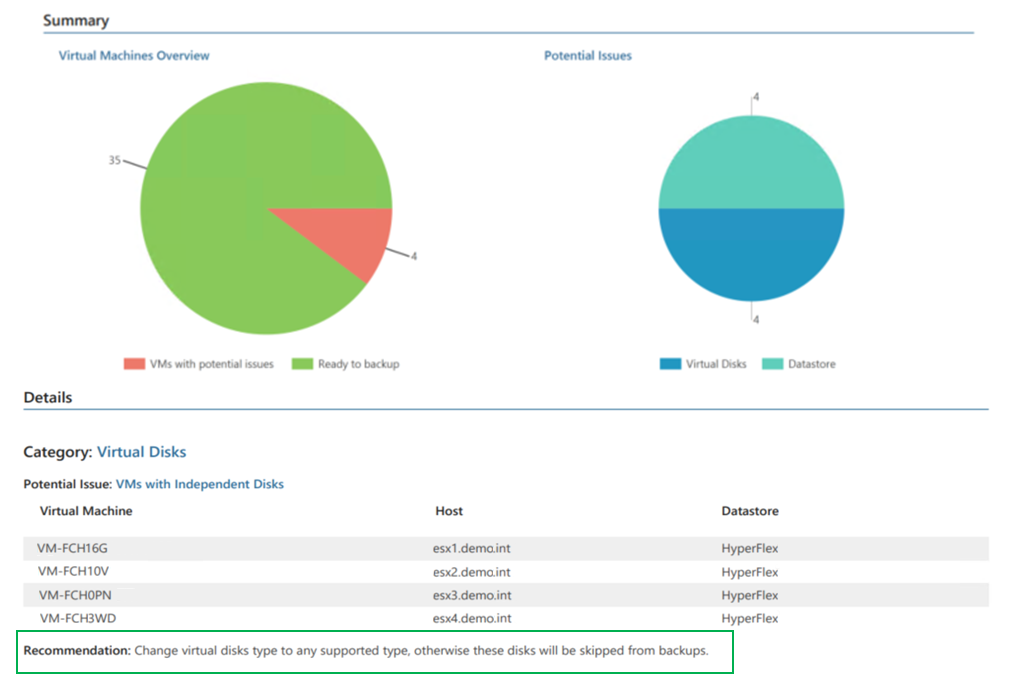In the last blog related to Service Provider reports, we discussed “TOP 10 must-have reports for any responsible IaaS Service Provider.” That post showed how taking data, analysing it and providing another point of view is one of the core ideas of any reporting tool. It can instantly assist you in an optimization process or even malware detection. If you missed it, before reading further, I highly recommend reading it.
Nevertheless, Veeam ONE is specifically famous for its forecasting capabilities. It uses the ability of data gathering from various parts of your infrastructure and then utilizes modern mathematical models for deep analysis. As a result, you get all the details in fully-customizable reports (PDF/XLS/JSON/CSV) or dashboards.
There are more than 25 reports targeted to predict the future behavior of an environment based on trends and historical data analysis of the environment. However, in this blog post, we’ll focus only on the seven most valuable for everyday usage for any service provider.
Virtual infrastructure reports
To follow in the footsteps of the previous blog, let’s start with Virtual infrastructure reports. Along with the development of your business complexity, it is growing exponentially.
Capacity Planning
Which resources are bottlenecked in the monitored infrastructure? When is the moment I should start to think about expanding it and what exactly should be done?
Traditionally, I’m going to start with one of the best and well-organized reports: Capacity planning.
This report is designed to forecast when the available virtual infrastructure resources will reach their minimum resource utilization levels.
At the same time, it reveals recommendations on resource allocation to maintain stable operations. That allows you to proactively optimize performance and resource utilization in your/customer’s environment. You can combine it with the Oversized VMs report, described in a previous blog.
Additionally, this data enables the business to proactively plan the infrastructure procurement and better mitigate the risks of delayed hardware deliveries due to the current day’s shortage of the hardware components in the supply chains.
Detailed overview:
Over-provisioned Datastores
Once you figure out which datastores are running out of space, how can you get some more detailed insights?
From our experience, the resource most often to cause production workloads issues is the storage space, or rather the lack of it on the datastores. The main reason for the other types of resources to be less prone to these types of issues (RAM might be an exception to this rule) is the ability of modern hypervisors to rebalance the workloads in the stack and maximize the efficiency of the resource’s utilization. Storage consumption, on the other hand, takes significantly more time and technical resources to apply a successful rebalancing. Most often, if the environment has reached the critical state of the storage space usage, it’s likely to lead to unplanned downtime and issues like data integrity being compromised in the running workloads. Storage space always requires special attention.
If you need more details about running out of storage datastore, just run the Over-provisioned Datastores report.
In addition to the basic metric provided in the report for the storage consumption trends and analysis, the “VM Count” metric allows you to view all of the VMs serviced off the affected datastore with additional details for the technical staff to take action and plan the remediation of the storage utilization issues.
Detailed overview: Vmware / Hyper-V
Host Failure Modelling
Can your infrastructure survive the simultaneous failure of multiple hosts?
The ability to forecast the resiliency of the monitored infrastructure based on modeled scenarios is the Holy Grail for any service provider’s infrastructure and their tenants. While being historically not an easy one to calculate in a dynamic environment, this is something you can easily achieve with the Host Failure Modeling report (and run it regularly, if the environment is truly dynamic and workload changes often)
Additionally, periodically check it to avoid “Unable to Power On Virtual Machine Due to Insufficient Failover Resources” errors during a host failure.
Detailed overview: Vmware / Hyper-V
How Many More VMs Can be Provisioned
What are the scalability limits of your infrastructure with the current resources available?
“How Many More VMs Can be Provisioned” is another self-descriptive report. You just get a straightforward number with the amount of VMs considering current trends. The entire magic of it is behind the scenes.
All calculations are based on the predicted future performance and virtual infrastructure capacities. That’s almost impossible to be reproduced manually.
Detailed overview: VMware
Backup infrastructure reports
Looking into the future compute and storage resources are only part of the story. Another one is what will happen during various processes. Backup is one cornerstone, as it commonly exposes flaws of an architecture.
Backup Infrastructure Assessment
Is my backup infrastructure built according to best practices?
Another “One of the best reports” is Backup infrastructure Assessment.
It analyzes the configuration of your virtual environment against a set of recommended baseline settings and implementations. It can simply identify VMs that cannot be properly backed up due to configuration limitations, verifies problem areas, and helps mitigate such issues.
By clicking on the link in the criteria list, you will get full details about related warnings/errors and suggestions on how to fix them.
If you are an IaaS provider, add this report to the regular health check tool kit.
Detailed overview: Backup Infrastructure Assessment
VM Configuration Assessment
How do I quickly determine which VMs in the infrastructure can be backed up easily and which may have potential issues?
It’s compounded by the fact when you run IaaS services (your private cloud), customers do not always understand the consequences of their actions. They can deploy and configure VMs in a way it’ll be impossible to back up but will still expect a certain level of protection.
VM Configuration Assessment provides deep insights about VMs that may have issues during the backup process. Additionally, it provides you the recommendations on how to fix it.
Alternatively, run this report in your IaaS infrastructure and use it as expert advice for your customers.
Detailed overview: VM Configuration Assessment
Bonus: Cloud Connect User Report (Backup)
Is enough storage space provisioned for my Cloud Connect customers?
For most companies, achieving off-site copy is the biggest challenge. By leveraging Cloud Connect,a service provider can build a Veeam-powered service to provide off-site backup.
One of the issues when running Cloud Connect backup service is the service provider’s responsibility for a customer repository. There are frequent scenarios when the customer even has no expertise to forecast the amount of required storage space.
The safe point here is Cloud Connect User Report. The summary overview provides great details and highlights how many days left till the tenant will reach the allocated quota. More tenant-specific details can be found on other pages.
Alternatively, highlight abnormal “Used space” growth which can reflect malware attack.
Detailed overview: Cloud Connect User Report (Backup)
The implementation of any service on an XaaS model is tightly linked with multiple risks, not exclusively controlled by the service provider. When service starts to grow and requires more instant reactions, it’s rapidly becoming more complicated. Even in such a dynamic scenario, Veeam ONE can dramatically simplify monitoring and forecasting mechanisms.
In this post, we have continued our journey through Veeam ONE use cases in an SP world. We are still going to touch on audit capabilities, which are utmost beneficial for IaaS providers and MSPs, in later posts. In addition to that, we are going to discuss multi-tenant access capabilities and respective services.
Stay tuned.
Also, make sure to check out the recording of our technical webinar, Powerful Monitoring & Analytics for Cloud & Service Providers (Thursday, Oct. 28, 11 a.m. CEST), where Artem Philippov and Yury Lichman provided a deep-dive of Veeam ONE use cases for service providers.
Read more:







